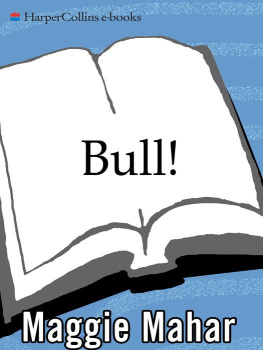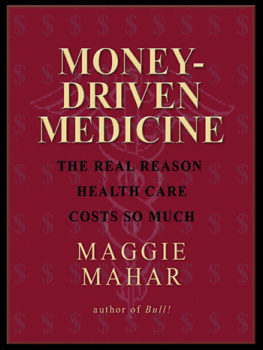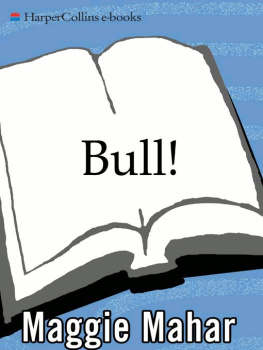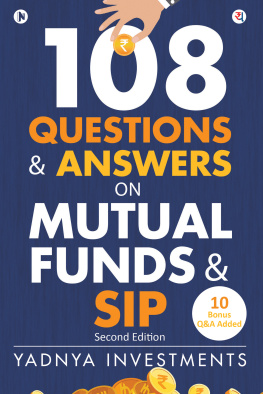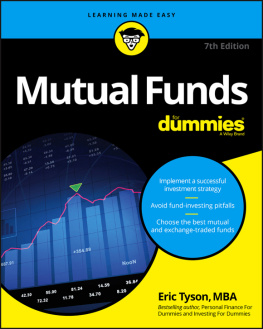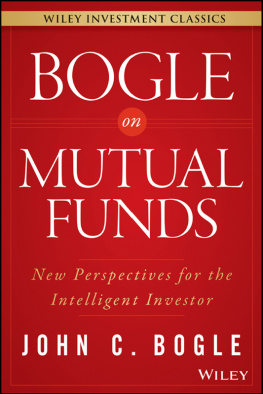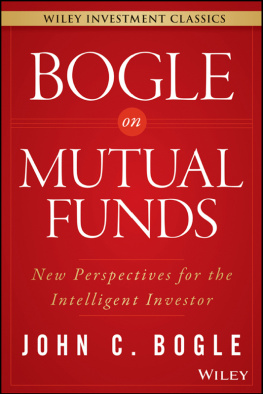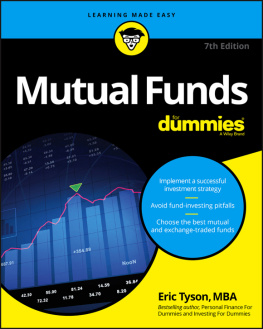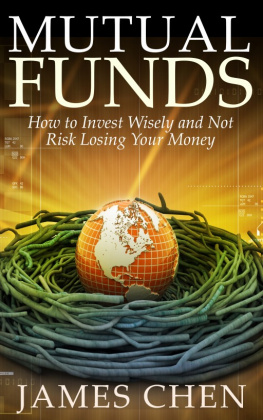M ore than a hundred people contributed to this book, sharing their experiences, their insights, and their knowledge. I would like to thank the many who agreed to be interviewed, often more than once, including Gail Dudack, Bob Farrell, Byron Wein, Henry Blodget, Richard Russell, Steve Leuthold, Ralph Acampora, Jim Chanos, Jim Grant, Jay Diamond, Abby Joseph Cohen, David Tice, Bill Gross, Peter Bernstein, Marc Faber, Jean-Marie Eveillard, Marty Whitman, Ralph Wanger, A. Michael Lipper, Don Phillips, Fred Sheehan, Jeremy Grantham, Maureen Allyn, Mark Headley, Clyde McGregor, Bill Fleckenstein, Martin Barnes, David Shulman, Laurence Tisch, Steven Einhorn, Nassim Nicholas Taleb, John Di Tomasso, Jim Awad, Jim Bianco, Paul Saffo, Robert Shiller, Hank Herrmann, Charles Biderman, Rick Ackerman, Bob Davoli, George Noble, John Collins, Edward Wolff, Bob Nurock, Charlotte Herr, Elizabeth Rivera, Lise Buyer, Jonathan Cohen, George Kelly, Stephen Roach, Neil Barsky, Bill Seidman, Arthur Levitt, Senator Jon Corzine, Joseph Stiglitz, David Ruder, Bert Ely, Harold Bierman, Allan Sloan, Jane Bryant Quinn, Mark Hulbert, Kate Welling, Jeff Madrick, William Powers, Herb Greenberg, Dave Kansas, Jonathan Weil, Ed Wyatt, Steven Lipin, Joe Nocera, Doug Henwood, Shirley Sauerwein, Jim Tucci, Ed Wasserman, Gary Wasserman, and Michael Malone.
Many reporters and financial writers contributed to this book. Since this is both a social history and a financial history, I turned to the media for a record, not just of what happened, but of what investors thought was happening during the Great Bull Market of 198299. In many ways, the media served as a mirror for investor sentiment, and sometimes as a lamp, illuminating the facts. I am indebted to the many reporters who kept that record and have tried to acknowledge that debt in my endnotes.
I also would like to thank Barrons for giving me the time and space to explore so many aspects of the financial world, in depth and in detail, in the stories that I wrote while working there from 1986 to 1997. During those years I learned much of what I know about both Wall Street and Washington.
I developed many of the ideas in this book in the late nineties while writing for Bloomberg News and Bloomberg Personal Finance. I especially want to thank my editors at Bloomberg Personal, Chris Miles and Steve Gittelson, for giving me the opportunity to explore themes that were not always popular at the time: market timing, bear markets, value investing, the importance of dividends, the dangers of the trade deficit, and the fallibility of the Fed.
From the time I began thinking about this book, Mary Bralove, a former Wall Street Journal editor and loyal friend, has proved the best sounding board a writer could have. When I began writing, she became my first reader. Since then, she has read and reread the manuscript, bringing an editors eye and a readers ear to the unending challenge of smoothing the narrative while keeping the argument on track. Or, as she would put it, turning spirals into straight lines. I could not have had a better reader.
Gail Dudack also became a collaborator. She provided many of the charts for this book, and her remarkably lucid and often prescient analysis has helped me focus my ideas.
Jim Chanos generously lent me his New Era files, a wonderful collection of often funny, always telling clippings that he kept as a personal record of a financial mania.
Susan Chace, Fred Sheehan, Bob Farrell, Gertrude Hughes, Steve Leuthold, Allan Sloan, Gail Dudack, Maureen Allyn, Jeff Madrick, William Powers, and Michael Klotz all read sections of the manuscript and provided valuable suggestions.
Johanna Piazza, Gregg Wirth, Chian Choo, Viken Berberian, Charlie Katz-Leavy, John Giuffo, and Carol Dannhauser did an admirable job fact-checking a manuscript filled with facts.
Most of all, I want to thank my familyEmily and Michael and Raymondfor their warm support and absolute faith that I could finish this project.
Last, but far from least, I would like to thank John Brockman, my agent, and Marion Maneker, my editor. Without John Brockmans professional integrity and encouragement I never would have gotten past Chapter 1.
Without Marion Manekers faith in the manuscript, I never would have arrived at Chapter 21. A writer himself, he is a writers editor. I particularly want to thank him for the role he played in shaping this story. He recognized, before I did, the importance of financial cycles as the underlying theme of the book. I also want to thank Edwin Tan for smoothing the path to publication with such diplomacy, efficiency, and finesse.
A s Henry Blodget rode the elevator to his office in the North Tower of the World Financial Center one morning in the late autumn of 1999, he had no idea that someone had left a message on his voice mail during the middle of the night.1
The 34-year-old Merrill Lynch analyst was accustomed to the pressures of his job. In recent years, Wall Street firms had realized the importance of turning their analysts into brand names, and Blodget had become a brand. With just a few words, he could send a stock to the moon.
He had made his reputation doing just that, less than a year earlier, by raising the bar for one of the New Economys most dazzling stars: Amazon.com. Henry Blodget was still a relatively unknown young analyst at CIBC Oppenheimer in December of 1998 when he boosted his forecast for Amazon from $150 to $400 a share. At the time, Amazon was trading at $240; within weeks, it blasted straight through the $400 target.
He was young; he was blond; he was on his way to becoming very rich. Almost immediately, Blodget became a media darling. CNBCs bookers wooed him; USA Today called him the man of the moment. By the end of 1998 even The Wall Street Journal showcased him as one of a group of Savvy Pros who Had an Early Line on This Years Biggest Winners.2
In February of 1999, Merrill offered Blodget a plum jobfirst chair on the firms Internet research team. Before long, the press would be speculating that, in 2001, Merrill Lynch paid Blodget as much as $12 million a year.
Blodget was still amazed by the effect that one call had on his career. The truth was that he had not been entirely comfortable with the $400 forecast, but Oppenheimers sales force needed a new estimate. When he rolled out his first report on Amazon in October of 1998, the stock was trading well over $80, and he set a target of $150adding that he thought the stock was worth anywhere between $150 and $500. By December, Amazon had shot past $200, and his firms sales team began pressing him for a new target. Blodget felt obliged to pick a number. Privately, he was confident that Amazon would hit $400he just didnt know if he had the balls to say it. But as his very first boss on Wall Street had told him, Youre not a portfolio manageryoure not trying to sneak quietly into a stock before someone else sees it. Youre an analyst: your job is to go out and take a position.
So he said it$400. And Amazon turned out to be a home run. His career had turned on that one call. Three years earlier, he had been a trainee at Prudential. Now, in the small but shimmering pond called the Internet, he stood second only to Morgan Stanleys Mary Meeker, the Internet analyst Barrons crowned Queen of the Net.
Entering his office, Blodget glanced out the windowhis office faced uptown, flanked on one side by the Hudson River, on the other side by the World Trade Center. Automatically, he checked his voice mail. As he listened, he recognized the callera fund manager who owned some of the stocks that he covered:

